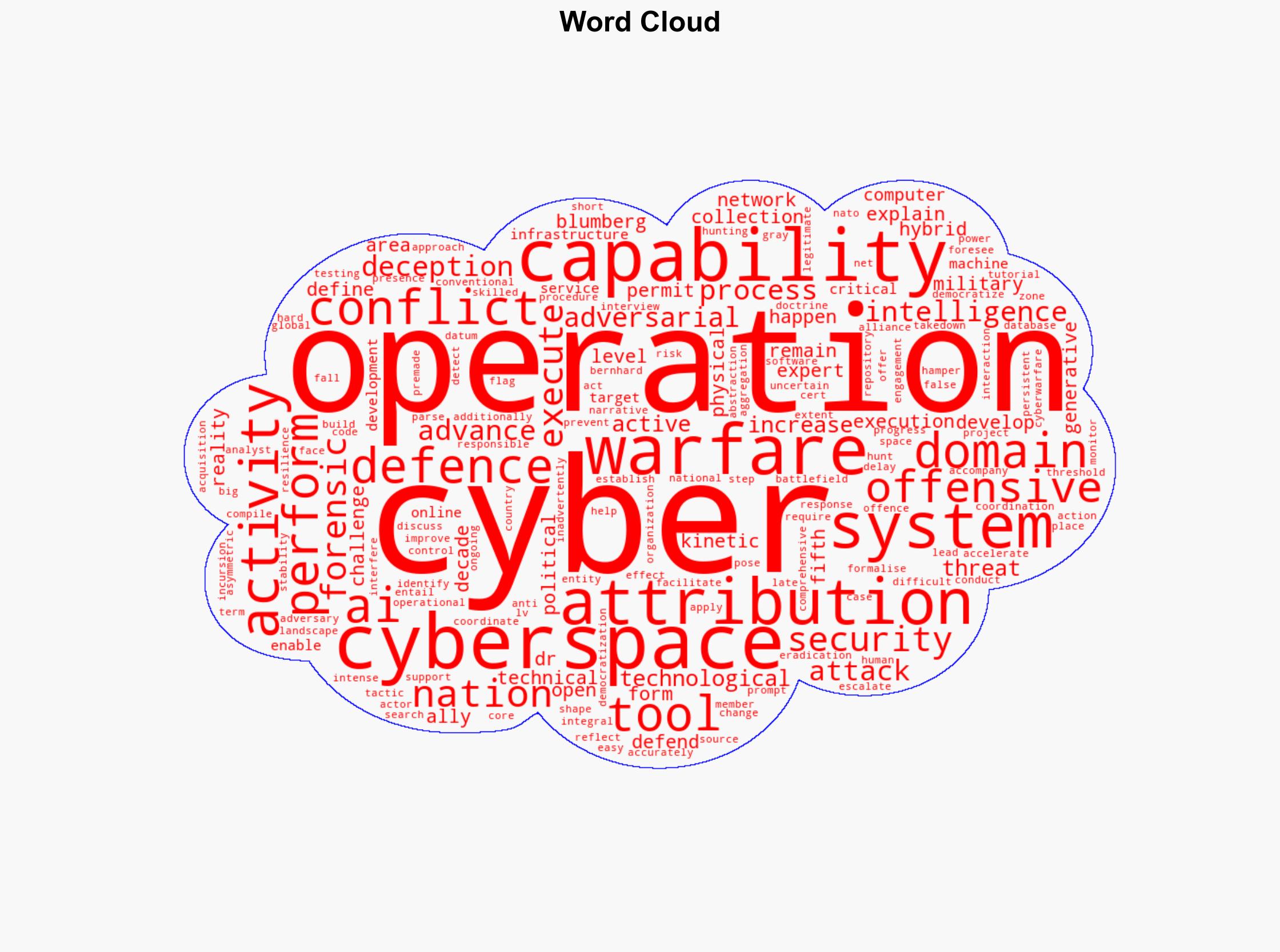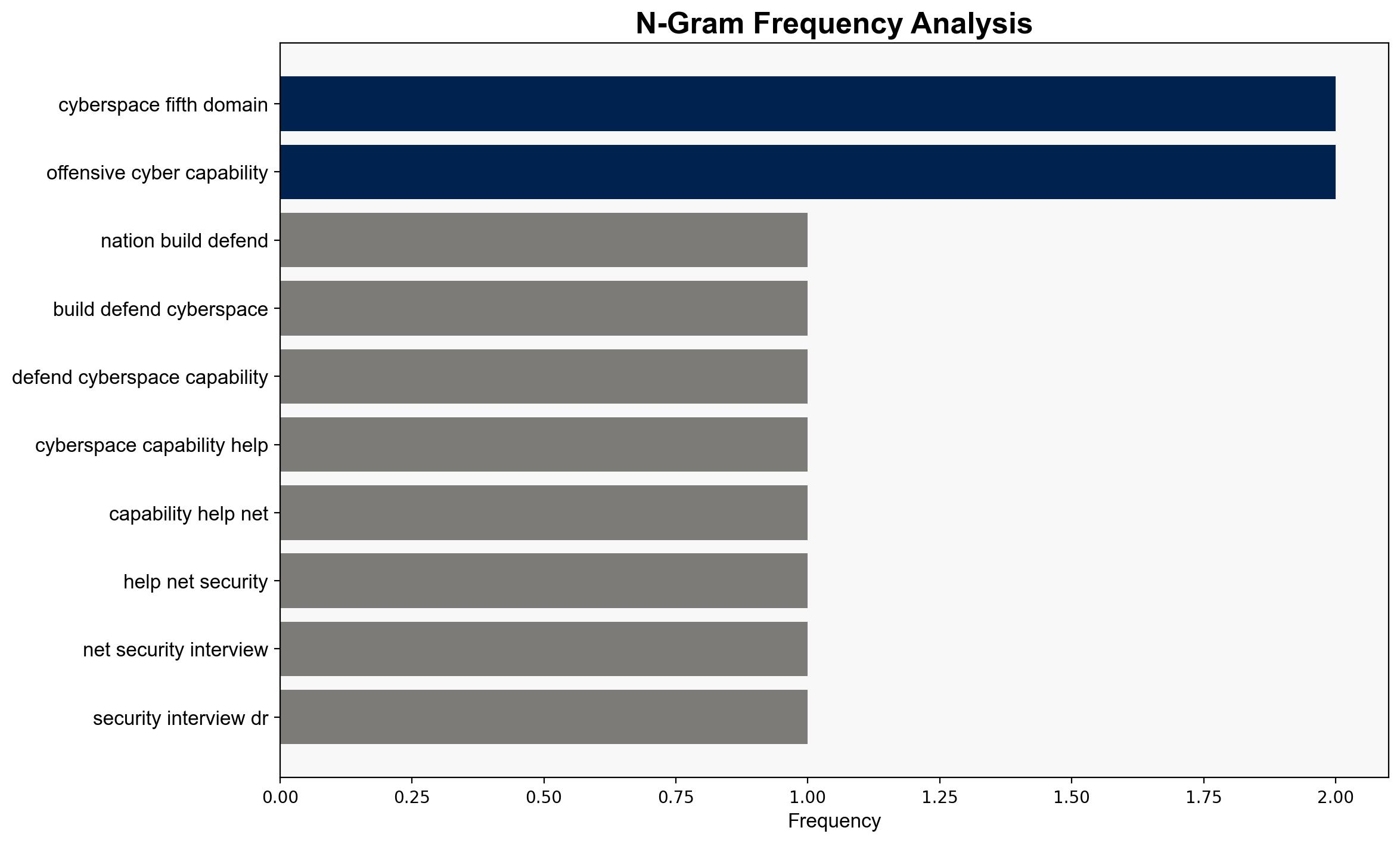How nations build and defend their cyberspace capabilities – Help Net Security
Published on: 2025-11-04
Intelligence Report: How nations build and defend their cyberspace capabilities – Help Net Security
1. BLUF (Bottom Line Up Front)
The most supported hypothesis is that nations are increasingly formalizing and enhancing their cyberspace capabilities to project power and defend against cyber threats, with a medium confidence level. The recommended action is to bolster international cooperation and develop rapid attribution mechanisms to mitigate the risks of cyber conflict escalation.
2. Competing Hypotheses
Hypothesis 1: Nations are effectively developing and coordinating cyberspace capabilities to project power and defend against cyber threats, as evidenced by NATO’s formal recognition of cyberspace as a warfare domain and the development of active cyber defense strategies.
Hypothesis 2: Despite advancements, nations face significant challenges in cyberspace operations, particularly in attribution and defense against sophisticated cyber threats, due to technological advances in anti-forensic and deception tactics.
Using ACH 2.0, Hypothesis 1 is better supported by the structured development of doctrines and international alliances, whereas Hypothesis 2 is supported by the persistent attribution challenges and the evolving threat landscape.
3. Key Assumptions and Red Flags
Assumptions:
– Nations have the capability and resources to develop effective cyber defense strategies.
– Attribution challenges can be mitigated through technological advancements.
Red Flags:
– Over-reliance on AI for attribution may lead to false positives.
– The assumption that all nations will adhere to international norms in cyberspace.
4. Implications and Strategic Risks
The formalization of cyberspace as a warfare domain increases the risk of cyber conflicts escalating into kinetic warfare. The democratization of offensive cyber capabilities poses a threat to global stability, as non-state actors and smaller nations can access sophisticated tools. Economic and geopolitical tensions may rise as nations struggle to keep pace with rapid technological advancements.
5. Recommendations and Outlook
- Enhance international collaboration to establish clear norms and rapid attribution protocols.
- Invest in advanced forensic AI and threat intelligence sharing to improve attribution accuracy.
- Scenario Projections:
- Best Case: Nations successfully implement collaborative cyber defense strategies, reducing the risk of escalation.
- Worst Case: Cyber conflicts escalate due to attribution errors, leading to kinetic warfare.
- Most Likely: Continued development of cyber capabilities with periodic conflicts and attribution challenges.
6. Key Individuals and Entities
Dr. Bernhard Blumberg
7. Thematic Tags
national security threats, cybersecurity, counter-terrorism, regional focus




